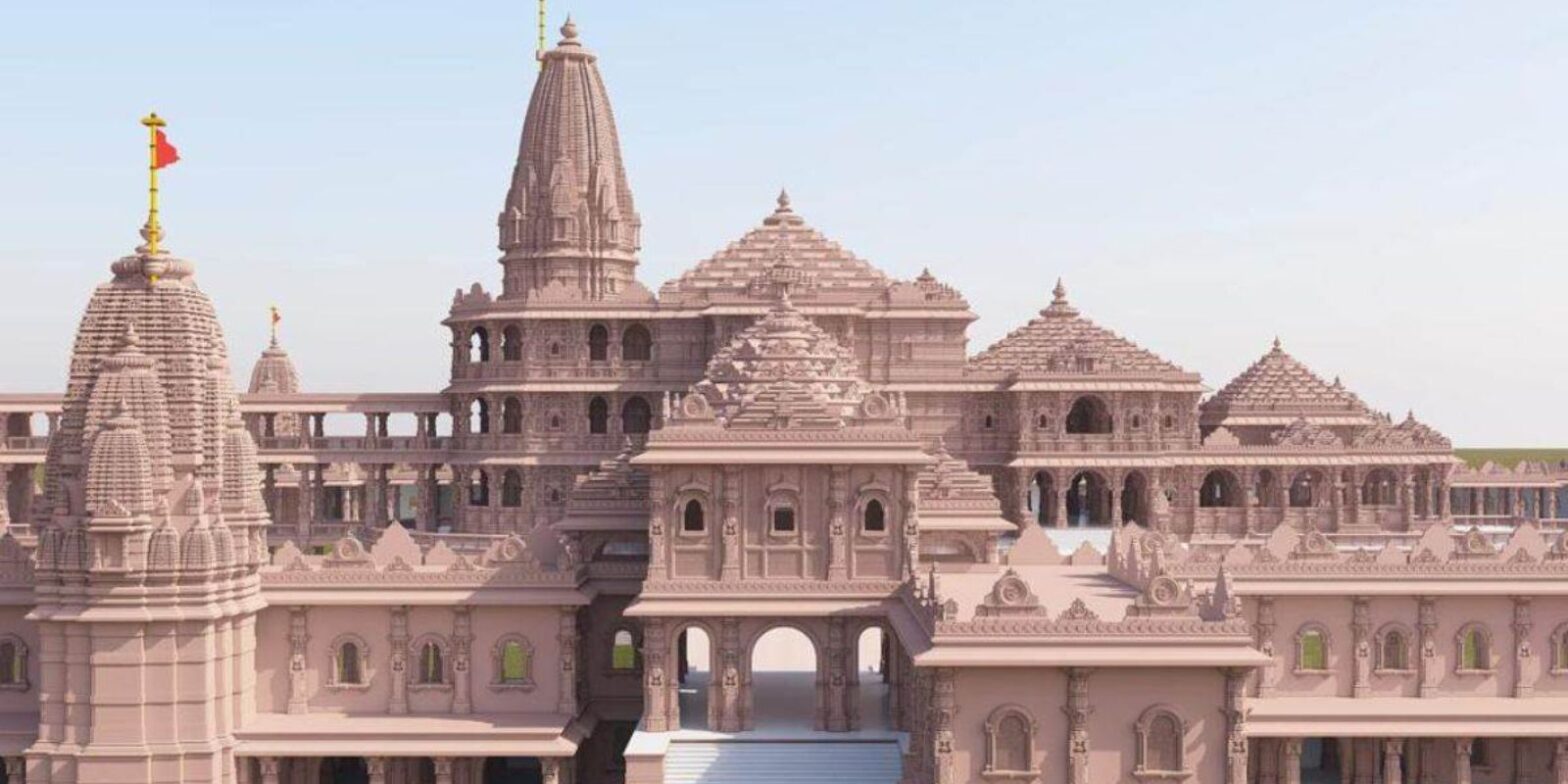One-way Road Trip to Ram Mandir : Hire a Driver in Jaipur

Introduction
Ram Mandir, located in Ayodhya, Uttar Pradesh, holds enormous importance for millions of devotees around the world. It is believed to be the birthplace of Lord Rama, an avatar of Lord Vishnu and is hallowed as a symbol of devotion, faith and agreement. The greatness of the temple, with its superb architecture and religious environment, attracts devotees from far and wide.
When embarking on a road trip from Jaipur to Ram Mandir, hire a driver can be a game-changer. It offers the suitability and peace of mind that comes with having a dedicated professional at the wheel, allowing you to focus alone on your spiritual journey. Let’s explore the countless benefits that come with hire a driver for this unforgettable pilgrimage.
Firstly, hiring a driver ensures your safety and comfort throughout the trip. Professional drivers possess extensive knowledge of road conditions and traffic patterns, favorable them to navigate efficiently and avoid any probable problem. They are well-versed in driving long distances and can handle different areas and weather conditions, providing a ease and secure journey for you and your fellow travelers.
Planning the Road Trip
Choosing the Right Time
When embarking on a road trip from Jaipur to Ram Mandir, selecting the right time becomes crucial for a slick and enjoyable journey. Two important factors to consider are weather conditions and traffic patterns.
Firstly, understanding the weather conditions along the route is essential to ensure a comfortable and safe trip. The region experiences varying climates throughout the year, ranging from burning summers to chilly winters. To avoid extreme temperatures or unfavorable weather, it is advisable to plan your road trip during temperate seasons.
Ideal seasons to consider are spring (March to May) and autumn (September to November). During these months, the weather in both Jaipur and Ram Mandir is generally pleasant, with moderate temperatures and minimum chances of rainfall. These seasons allow for a more comfortable and enjoyable road trip experience.
Road trip
Route 1: Jaipur – Tonk – Sawai Madhopur – Bharatpur – Agra – Faizabad – Ayodhya
This route takes you through the historical city of Agra, where you can visit the symbolic Taj Mahal. From there, you proceed towards Faizabad and finally reach Ayodhya. This route offers a blend of architectural marvels and cultural richness.
Route 2: Jaipur – Ajmer – Kota – Kanpur – Faizabad – Ayodhya
This route takes you through the famous Ajmer Sharif Dargah and the scenic city of Kota. From there, you proceed towards Kanpur and finally reach Ayodhya. This route showcases the lively cultural heritage of Rajasthan and the architectural glory of Uttar Pradesh.
Choti Chawni in Ayodhya
Choti Chawni is a significant locality in the city of Ayodhya, located in the state of Uttar Pradesh, India. It is a bustling area known for its historical and cultural significance. While Ayodhya itself holds immense religious importance as the birthplace of Lord Rama, Choti Chawni has its own distinct charm and attractions.
Choti Chawni is situated near the heart of Ayodhya and is known for its vibrant atmosphere. The term “Chawni” typically refers to a camp or a temporary settlement, and it is believed that Choti Chawni was established centuries ago to accommodate visitors and pilgrims who flocked to Ayodhya. Over time, it has transformed into a permanent residential and commercial area.
One of the notable landmarks in Choti Chawni is the Hanumangarhi Temple, dedicated to Lord Hanuman. This ancient temple is a significant pilgrimage site and draws devotees from far and wide. It is said that Lord Hanuman resided here during the events of the Ramayana and played a pivotal role in Lord Rama’s quest to rescue his wife, Sita.
Choti Chawni also boasts a vibrant market, where visitors can explore a variety of shops selling religious artifacts, clothing, jewelry, and local handicrafts. The market is particularly lively during festive occasions, such as Ram Navami, when Ayodhya attracts a large number of devotees celebrating Lord Rama’s birth.
Apart from the religious and commercial aspects, Choti Chawni reflects the local culture and traditions of Ayodhya. It is a hub of activity, with narrow lanes lined with shops and vendors selling street food, sweets, and snacks. The aroma of delicacies like jalebi, rabri and samosas fills the air, tempting visitors to indulge in the local culinary delights.
Choti Chawni is not just a place of religious and cultural significance; it also serves as a reminder of Ayodhya’s rich history and heritage. It showcases the harmonious blend of tradition and modernity, where ancient temples coexist with modern establishments, creating a unique tapestry of past and present.
Visiting Choti Chawni in Ayodhya provides a glimpse into the essence of the city, allowing travelers to experience the spiritual fervor, vibrant markets, and warm hospitality that characterize this ancient place. It is a destination that attracts devotees, history enthusiasts, and curious travelers alike, offering a memorable and enriching experience.
Tulsi Smarak Bhawan
Tulsi Smarak Bhawan is a prominent memorial and cultural center located in the city of Ayodhya, Uttar Pradesh, India. It is dedicated to the renowned saint and poet Goswami Tulsidas, who is best known for his composition of the Ramcharitmanas, an epic retelling of the Ramayana in the Hindi language.
Tulsi Smarak Bhawan serves as a tribute to the life and works of Goswami Tulsidas and stands as a symbol of his immense contribution to Indian literature and spirituality. The memorial is situated on the banks of the Sarayu River, adding to its serene and picturesque setting.
The architecture of Tulsi Smarak Bhawan is a blend of modern and traditional elements, reflecting the rich cultural heritage of Ayodhya. The complex comprises various sections, each designed to showcase different aspects of Tulsidas’ life and teachings.
The main attraction of the memorial is the Tulsidas Museum, which houses a vast collection of artifacts, manuscripts, paintings, and sculptures related to the life and times of Tulsidas. Visitors can explore the museum to gain a deeper understanding of his literary works, philosophy, and the historical context in which he lived.
The memorial also features a prayer hall or Satsang Bhawan where devotees and visitors can participate in spiritual discourses, hymn recitals, and devotional gatherings. It serves as a hub for the propagation of Tulsidas’ teachings and the promotion of spiritual values.
Surrounding the memorial, beautifully landscaped gardens provide a tranquil environment for visitors to relax, reflect, and immerse themselves in the spiritual ambiance. The gardens are adorned with statues depicting scenes from the Ramayana and significant figures from Tulsidas’ compositions.
Tulsi Smarak Bhawan holds a special significance during festivals like Tulsidas Jayanti and Ram Navami when devotees and pilgrims gather to pay homage to the great saint-poet. The memorial becomes a focal point for cultural programs, music and dance performances, and literary events, celebrating the legacy of Tulsidas.
Apart from its religious and cultural importance, Tulsi Smarak Bhawan also serves as a research and educational center, promoting the study of Tulsidas’ works and his impact on Indian literature. Scholars, researchers, and enthusiasts come here to delve deeper into the literary genius of Tulsidas and his enduring influence on society.
Tulsi Smarak Bhawan stands as a significant landmark in Ayodhya, honoring the life and teachings of Goswami Tulsidas. It serves as an inspiration for individuals seeking spiritual enlightenment and a deeper understanding of the cultural and literary heritage of Ayodhya. Visiting this memorial offers a profound experience, connecting visitors with the timeless wisdom and devotion of Tulsidas.
Conclusion
We have explored the various aspects of planning such a trip, emphasizing the suitability and benefits of hiring a driver.
By selecting the right time for your road trip, considering weather conditions and traffic patterns, you can ensure a comfortable and safe journey. Spring and autumn are ideal seasons to plan your trip, as they offer pleasant weather and fewer crowds.
Route selection plays an important role in improving your road trip experience. Whether you choose to explore the historical city of Agra or immerse yourself in the cultural richness of Rajasthan, each route presents unique attractions and scenic beauty. Consider factors such as road conditions, distance, and travel time while selecting your route.
Hiring a driver for your road trip brings numerous advantages. From ensuring safety and comfort to providing local expertise, a professional driver allows you to relax and enjoy the journey. Invite recommendations, read reviews, and evaluate the driver’s license, experience, and knowledge of the route to find a reliable driver in Jaipur.
PHOTO BY: FINANCIALXPRESS
ALSO READ: 3-Day Outstation Road Trip: Hire a Driver in Jaipur




